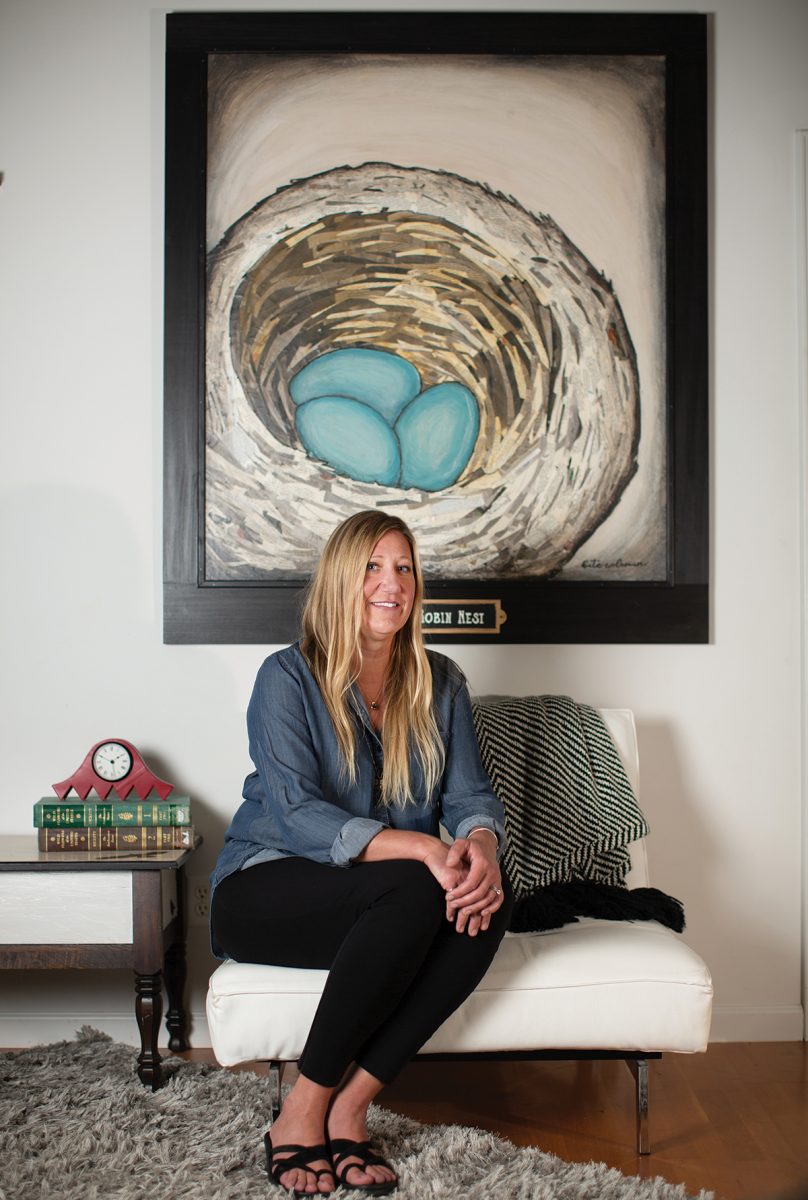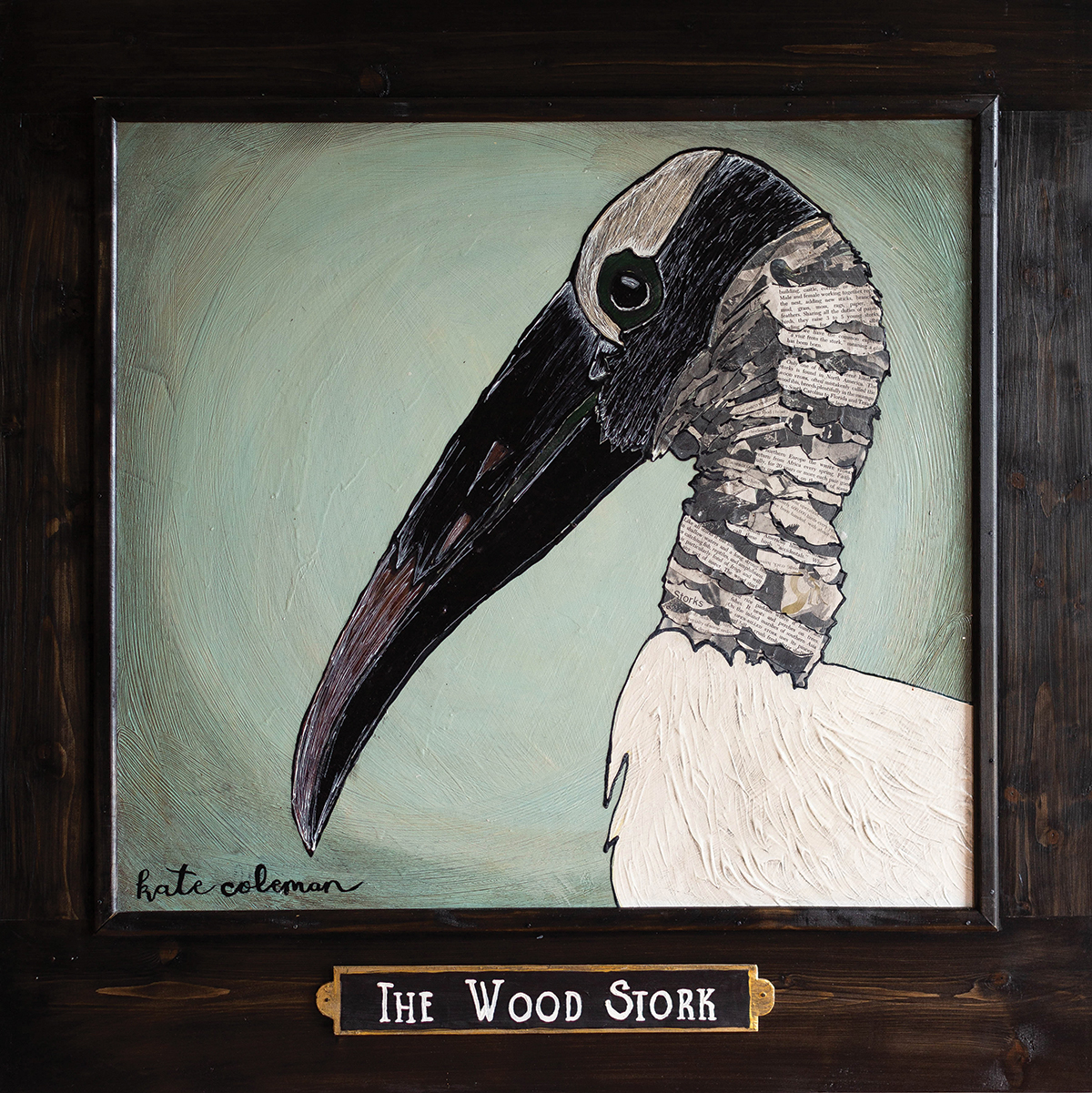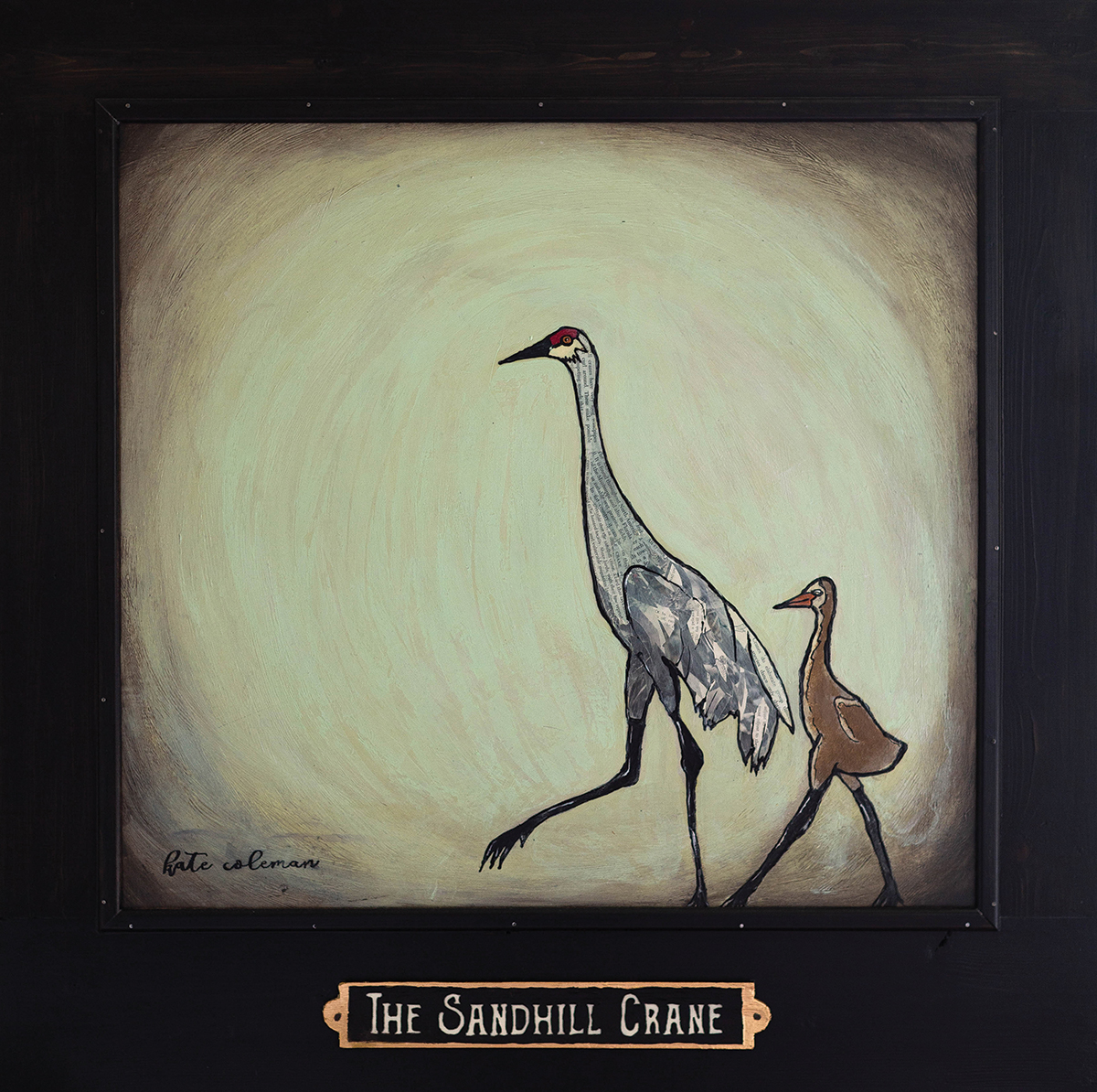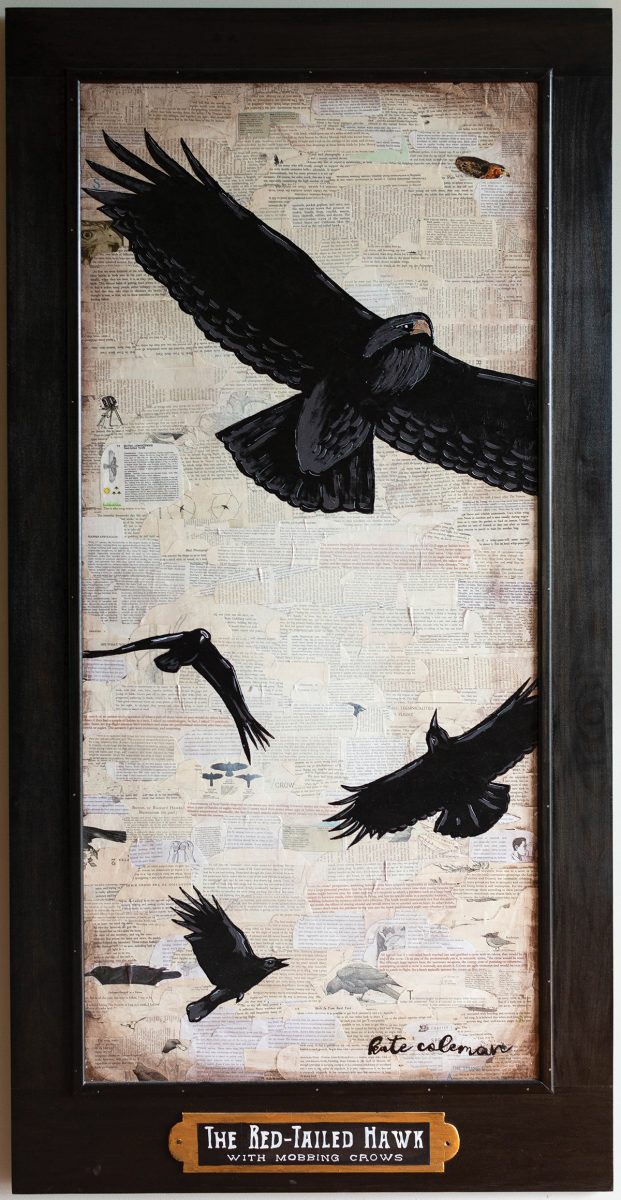Artist combines vintage literature and favorite flyers

Portrait by Colby Rabon
Surburban Indiana is an unlikely start for a birding buff. But Kate Coleman traces her fascination with ornithology back to a childhood living room in Greenwood, where she made short work of a National Audubon Society field guide.
“I am a huge nerd,” says Coleman. “I have always loved discovering new information.”
Today, not much has changed. Now living in Swannanoa, Coleman uses art to honor all things fowl. In doing so, she explores two passions through one medium. Her large-scale paintings lure the animal out of its natural habitat of reeds or hardwoods and into a shadowy backdrop. For once, the elusive Great Horned Owl presents himself for longer than a teasing glimpse. He lingers, showing the deep yellow of his eyes and the slick sheen of his feathers.

“I showcase the bird and its features. I give it a simpleness, a distinctiveness,” says Coleman.
She wants the bird to be seen. And so, acrylic paint is layered with pages ripped from vintage bird books. The literature corresponds to the bird. “The Peacock,” for instance, frames the eye-spotted train of feathers in yellowing pages that describe the species’ origins. “The Canada Goose” incorporates text detailing migration patterns in the goose’s white plumage. “The Sandhill Crane” makes note of bizarre mating rituals, though nothing quite does the act justice.
“You must look up their mating ritual on YouTube,” Coleman says with a laugh.

While some coveted subjects, like the Scarlet Tanager and even the Bald Eagle, present themselves at Coleman’s mountain home, the painter also draws from a robust memory of shorebirds in Florida, where she lived for eight years.
“I have a list of birds in my head,” she says. One includes the Wood Stork — a snowy-white wading bird with a “sentimental look about it.” Another is the Great Blue Heron. A favorite of Coleman’s, the heron tiptoes slowly through ponds and flooded fields, watching the shallows for fish and crawdads. Coleman has painted several herons, perhaps because the creature’s patience is so emblematic of birding.

At its most basic level, birding is a form of wildlife observation. According to the National Audubon Society, the hobby attracts some 47 million enthusiasts across the country. Skills range from the backyard gawker, who uses nothing more than the naked eye to identify Hooded Warblers, to the raptor roshi, who invests in high-powers bins (AKA binoculars) and travels to far-flung places to spot, for instance, the San Clemente Loggerhead Shrike.
Coleman falls in the middle. For one, she owns bins. “Optimus Maximum,” one of her few non-bird paintings, actually illustrates a pair of binoculars. She also sports several apps to help identify bird songs — so much is about listening, after all. But the best tool is a tattered National Audubon Society field guide in her living room.

“I want to produce a piece that affects someone,” says Coleman. “I want to capture the bird’s true character.”
Kate Coleman, Swannanoa. Coleman is represented by Woolworth Walk (25 Haywood St., Asheville, woolworthwalk.com); Asheville Gallery of Art (82 Patton Ave., ashevillegallery-of-art.com); and Studio 375, 375 Depot St., in Asheville’s River Arts District (on Facebook). For more information, visit katecoleman.com.

Just stunning and incredible!! What a phenomenal artist!